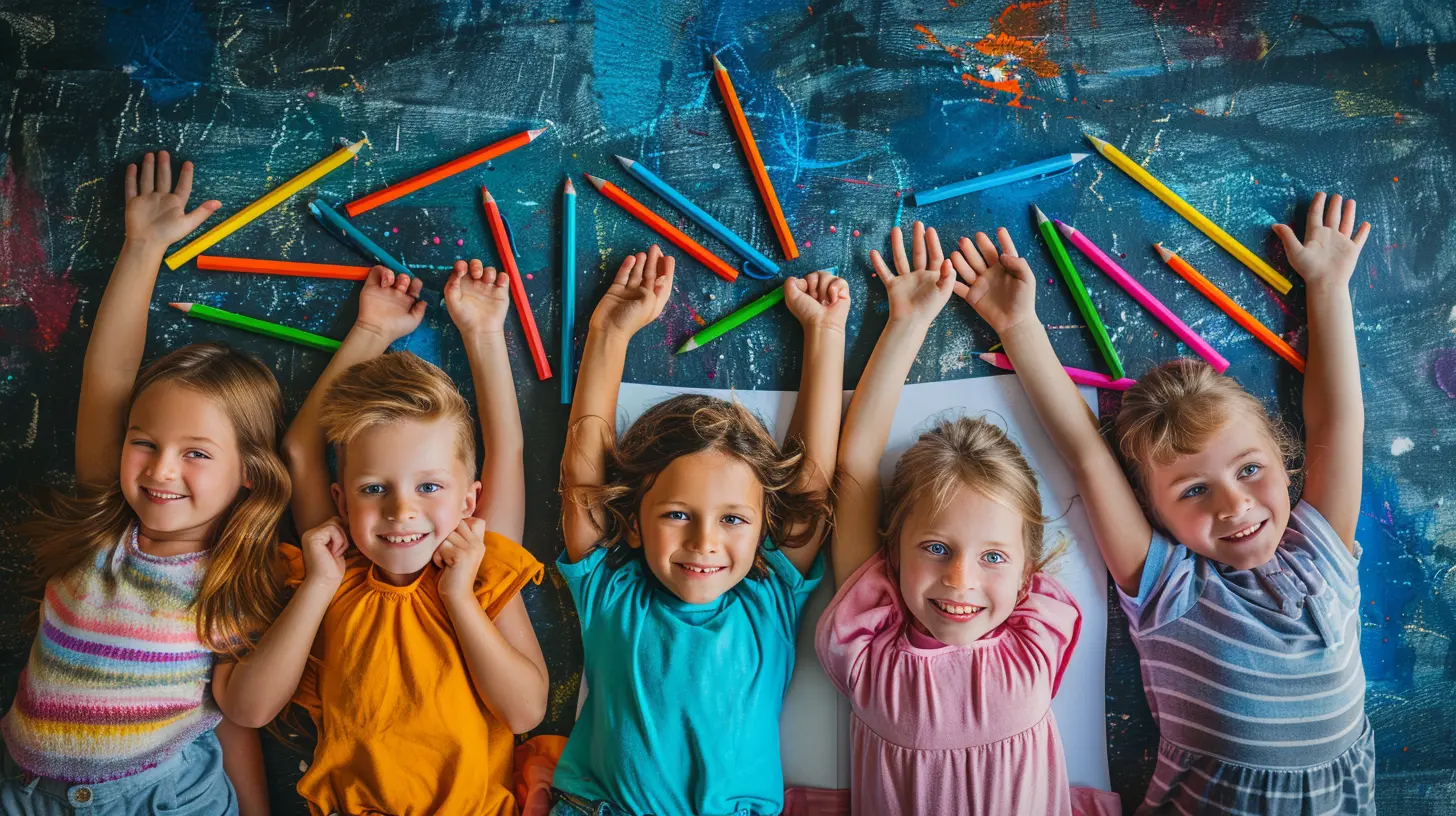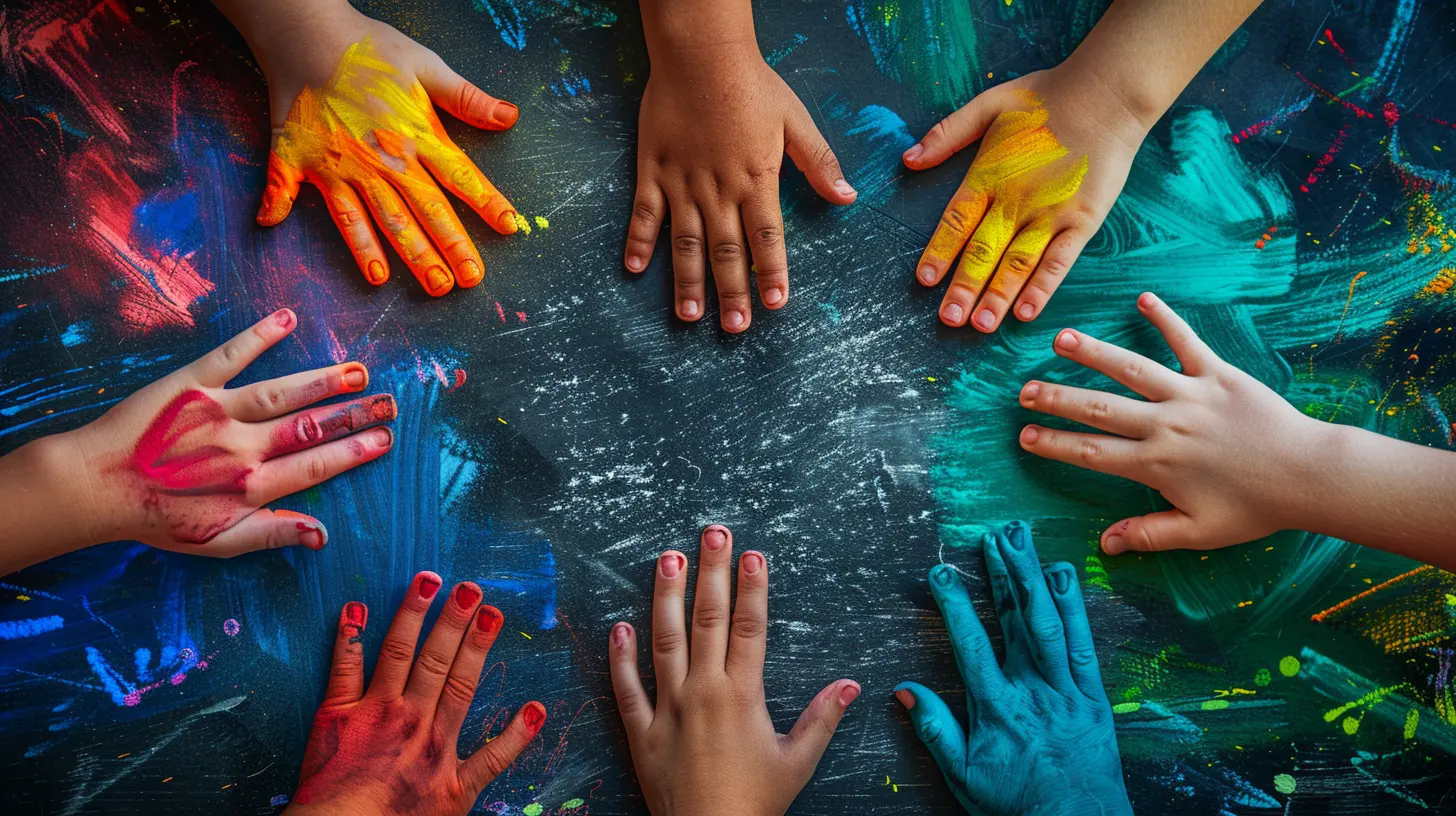Collaborative Storytelling Activities to Boost Creativity
8 July 2025
Creativity… it’s that magical power that turns ideas into art, thoughts into inventions, and dreams into stories. But what if I told you creativity doesn’t have to be a solo mission? What if, instead of staring at a blank page alone, you could spark your imagination with the help of others? That’s where collaborative storytelling swoops in like a superhero wearing a cape made of ideas.
Yep, storytelling isn’t just for lone authors. In fact, some of the most colorful and surprising stories come from groups of people working together. Whether you're a teacher looking to spice up your lessons, a team leader trying to strengthen team dynamic, or just someone who loves stories, collaborative storytelling offers a fresh way to boost creativity and have some serious fun along the way.
Let’s dive deep into the world of collaborative storytelling and uncover some amazing activities that can turbocharge creativity for learners of all ages.
What Is Collaborative Storytelling?
Before we jump into the good stuff (the activities), let’s set the stage. Collaborative storytelling is when two or more people create a story together. That’s it. Simple, right?It can be spoken, written, acted out, drawn, or even built using digital tools. What makes it special is that no one person owns the story—it evolves based on everyone’s input. Kinda like a creative recipe where each person adds a new ingredient.
And the result? A melting pot of perspectives, themes, and plot twists that no single person could cook up alone.
Why Collaborative Storytelling Sparks Creativity
You might be wondering—what’s so special about telling stories together?Here’s the deal. Collaborative storytelling pushes you out of your comfort zone. You have to think on your feet, react to what others say or do, and come up with fresh ideas again and again.
Let’s break it down:
- New perspectives: You get to see how others think, which opens your mind.
- Problem-solving: Unexpected plot twists? You’ve got to figure it out together.
- Improv magic: It's like mental gymnastics for the brain—keeps you flexible.
- Self-confidence: When others love your idea, it boosts your creative self-esteem.
In short, it’s not just a storytelling game—it’s a creativity gym.
Collaborative Storytelling Activities to Boost Creativity
Alright, now for the juicy part. Here are some fun, quirky, and mind-expanding activities you can use in the classroom, at work, or even around the dinner table.1. The Story Circle
Best for: Small groups, classrooms, creative teamsWhat you need: Just your voices and imagination
Here’s the setup: Everyone sits in a circle. One person starts the story with a sentence like "Once upon a time, in a land full of floating islands…” Then, the next person adds another sentence. And so on.
Sounds easy? Wait until someone throws in a plot twist like “suddenly, the sky turned green and the islands started to fall!”
The trick is to listen carefully, build on each other’s ideas, and keep the story moving forward. It’s a perfect warm-up for group creativity.
2. Comic Strip Collaboration
Best for: Visual learners, art classes, mixed-media storytellingWhat you need: Paper, markers, or online comic tools
Pair up or form small teams. Person A draws the first panel of a comic—including a character, setting, and action. Person B draws the second panel without knowing what the final ending will be. Alternate back and forth until the comic is complete.
What emerges is often hilarious, unexpected, and wildly creative. It’s like playing Pictionary and writing a novel at the same time.
3. Pass-the-Paper Story
Best for: Elementary students, writing workshopsWhat you need: Paper and pens
Each person starts with a blank sheet of paper and writes the first paragraph of a story. After a set time (say, 3 minutes), everyone passes their paper to the person next to them. That person reads what’s written and adds the next paragraph.
Repeat the process until every paper returns to its original owner. Now read the final versions aloud. Some plots may be coherent, others will be chaotic—but they’re guaranteed to be entertaining.
It’s like literary hot potato with epic plot development.
4. Roll-the-Dice Tales
Best for: Gamified learning environmentsWhat you need: Dice and storytelling prompts (characters, settings, problems, etc.)
Create a chart where each number on the die corresponds to a storytelling element. For example:
- 1 = Alien
- 2 = Talking animal
- 3 = Magical object
- 4 = Time machine
- 5 = Deserted island
- 6 = Robot revolution
Each player rolls the dice and uses their result to help shape the story. The challenge? Blend these random elements together in a way that makes sense (or at least tries to!).
Rolling the dice adds surprise and challenge, which gets the creative juices flowing like a river after a rainstorm.
5. Puppet Story Showdown
Best for: Younger learners, drama classesWhat you need: Puppets or homemade characters, stage area
Let kids (or adults, let’s be honest—it’s just as fun) create their own puppet characters. Then, split into teams and put on a puppet play based on a given theme like “lost in space” or “magical bakery.”
Everyone must contribute lines, actions, and dialogue for their characters. This activity blends storytelling, performance, and character building—a triple combo for creativity.
Best part? You’ll laugh till your sides hurt.
6. Digital Story Builders
Best for: Tech-savvy learners, remote teamsWhat you need: Online platforms like Storybird, Book Creator, or Google Slides
Let’s bring storytelling into the digital age. Assign roles—writer, illustrator, editor, planner—and use online tools to build an interactive storybook or presentation. Google Slides is great for this because multiple people can contribute in real time.
It’s storytelling meets teamwork meets tech skills. And the final product? Something that can actually be published or shared.
7. Character Swap
Best for: Literature studies, advanced storytelling groupsWhat you need: Familiar characters or books
Choose well-known characters from books, movies, or history. Now imagine they’ve landed in a totally different universe. What would Sherlock Holmes do in “The Hunger Games”? How would Harry Potter survive in “The Matrix”?
Let each person take on a character and write or act out what happens next. It’s a super fun way to blend creativity with analytical thinking. Plus, it helps learners understand character traits on a whole new level.
Tips for Facilitating Collaborative Storytelling
Doing the activity is just half the story. The way you guide it makes all the difference.Here are a few tips to keep things smooth and inspiring:
- Encourage wild ideas – The weirder, the better. Creativity thrives on risk-taking.
- No wrong answers – It’s all about contributing, not perfection.
- Rotate roles – Let everyone take turns being the narrator, illustrator, etc.
- Reflect afterwards – Talk about what was fun, what was tricky, and where the story could go next.
- Keep it playful – Remember, it’s not a competition. It’s a collaboration.
Real Life Benefits of Collaborative Storytelling
This isn’t just a fun classroom trick. These activities build real-life skills that stick.Think about it:
- Collaboration—Working together toward a shared goal.
- Communication—Explaining ideas, listening to others.
- Flexibility—Adapting when the story zigs instead of zags.
- Empathy—Understanding different viewpoints and experiences.
These are the very skills that help people innovate, lead, and connect in today’s world. So yeah—storytelling just might be a superpower in disguise.
Final Thoughts: Let’s Keep the Story Going
Collaborative storytelling is like a fire pit on a chilly night—it pulls everyone together, warms up the imagination, and keeps creativity glowing. Whether you're a teacher, team leader, parent, or just a curious soul, weaving stories as a group can unlock new parts of the brain—and maybe even change how you see the world.So what are you waiting for? Grab some friends, a notebook, or a digital tool, and start your own storytelling adventure today.
Who knows what epic tales you’ll create together?
all images in this post were generated using AI tools
Category:
Classroom ActivitiesAuthor:

Madeleine Newton
Discussion
rate this article
2 comments
Sablethorn Klein
This article offers valuable insights into collaborative storytelling as a means to enhance creativity. By emphasizing teamwork and diverse perspectives, these activities can stimulate imaginative thinking. Implementing such strategies in educational settings could foster a more engaging and innovative learning environment for students.
November 26, 2025 at 12:02 PM
Jasmine Fletcher
This article beautifully highlights the power of collaborative storytelling in fostering creativity. Engaging with others not only enriches ideas but also enhances communication skills. It’s a reminder that creativity flourishes in community, making storytelling a valuable tool for personal and collective growth.
July 20, 2025 at 10:46 AM

Madeleine Newton
Thank you for your thoughtful insights! I'm glad you resonated with the power of collaborative storytelling in enhancing creativity and communication.


